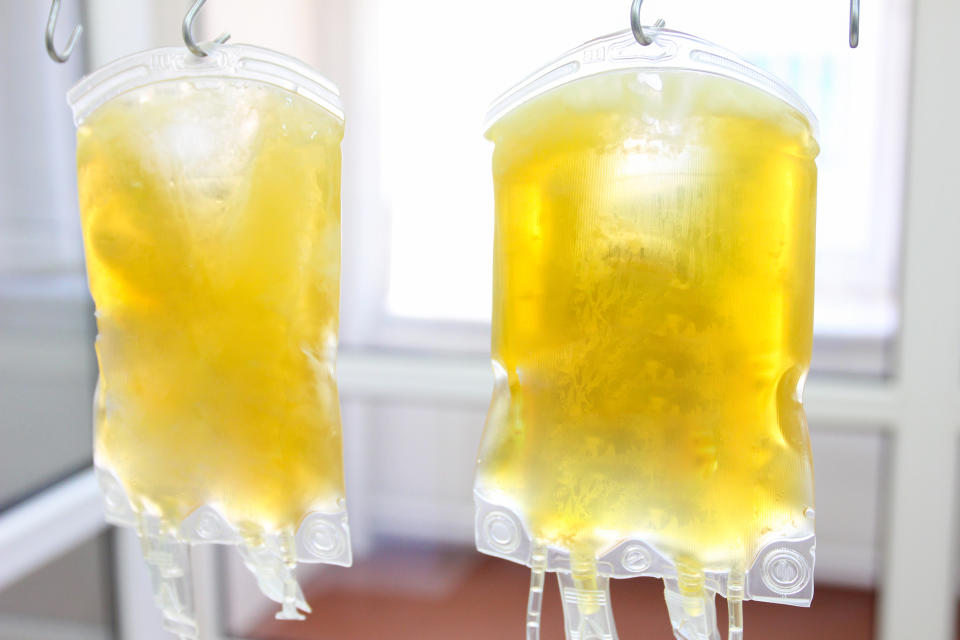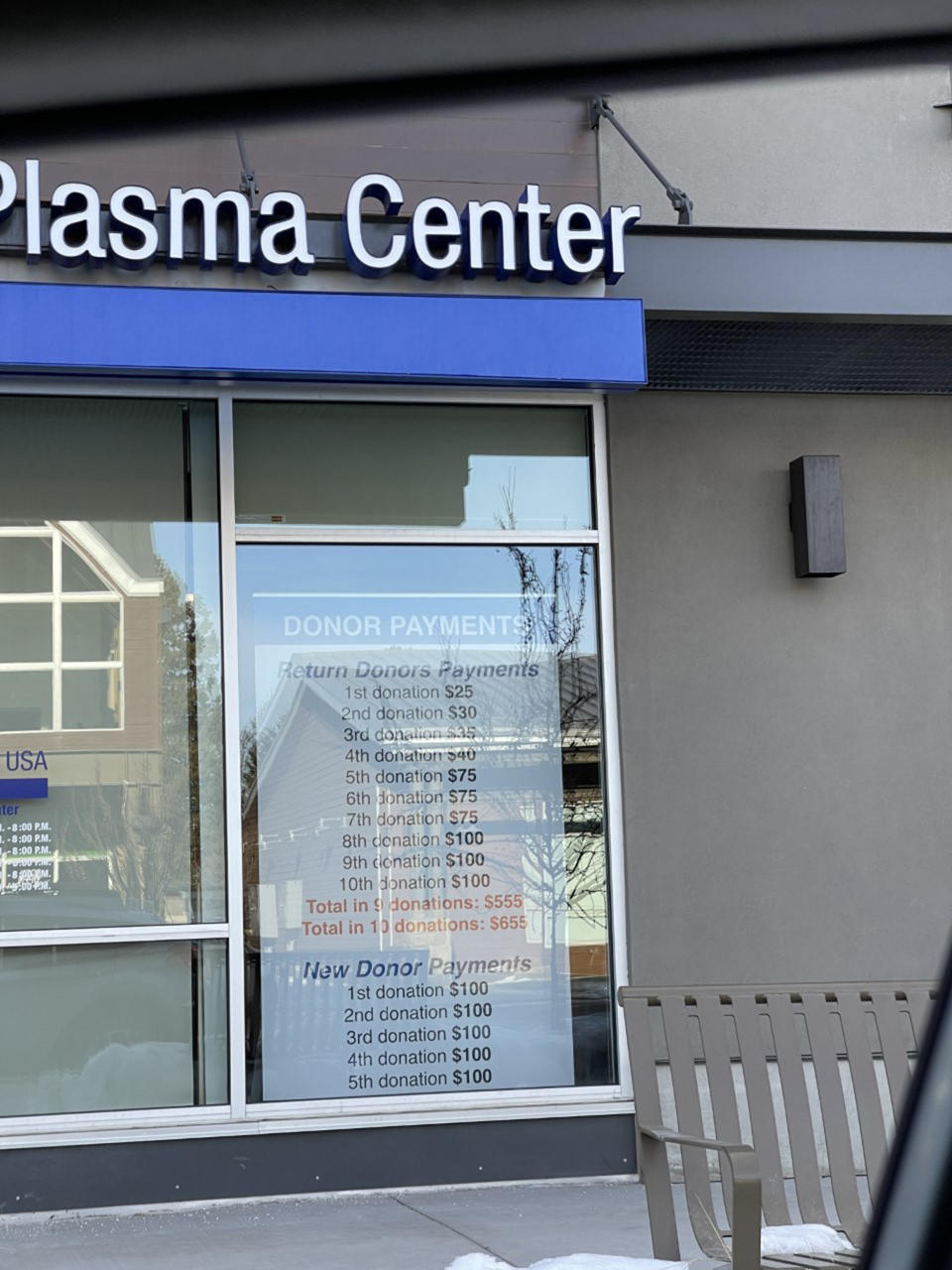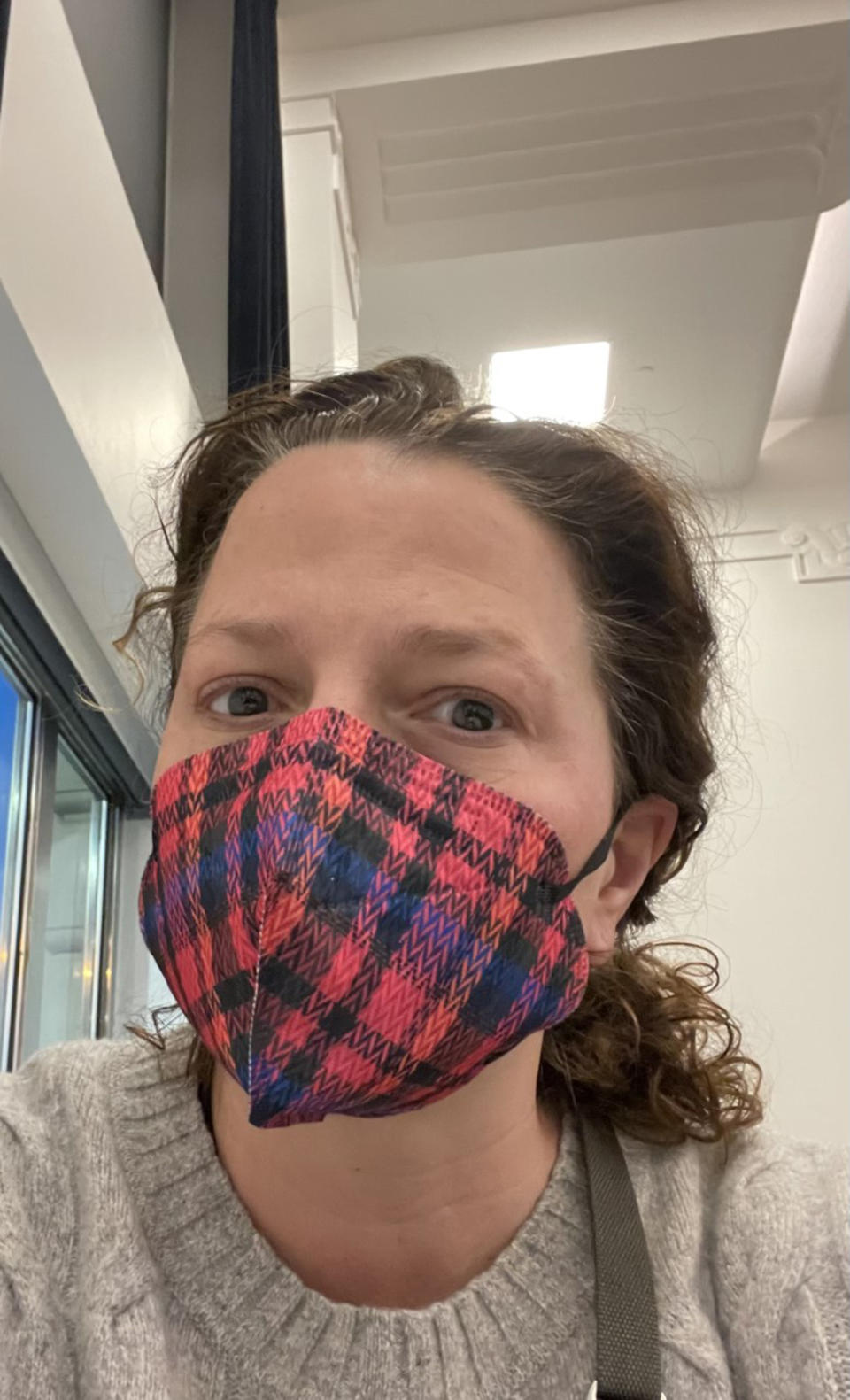The hidden way many Americans make ends meet: Selling their plasma
When Kelsey, a local news journalist in the Midwest, was asked to be a bridesmaid at a friend’s wedding, she had trouble paying for the dress, travel and all the other expenses for the occasion.
So she decided to sell her blood plasma for extra cash. She earned $800 for six donations, which solved her money problems, but came with a physical toll: fatigue and the feeling of being “wiped out” after each plasma center visit.
Kelsey, which is not her real name, shared her story with Kathleen McLaughlin, a journalist who interviewed more than 100 people who donate their plasma for money.
It’s a hidden practice that’s become an “essential income source” for many Americans, McLaughlin writes in her new book, “Blood Money: The Story of Life, Death, and Profit Inside America’s Blood Industry.”
An estimated 20 million people — almost 8% of the adult U.S. population — may be selling their blood plasma in any given year, McLaughlin reports. Many of the people she interviewed didn’t want her to use their real names in the book.
“It’s fascinating to me that if you’re a blood donor — you go to the Red Cross a couple of times a year and you donate blood — you tell people about it. It’s kind of a heroic thing,” McLaughlin tells TODAY.com.
“Donating plasma is not any different — you’re also contributing to something that saves people’s lives, but most people who do it don’t want to talk about it. I think that’s because there is this financial transaction that comes along with it.”
Plasma, the liquid portion of blood, contains critical proteins for blood clotting and immunity, according to the American Red Cross. Pharmaceutical companies use it to make treatments for immune deficiencies and bleeding disorders, the organization notes.

The U.S. is one of only five countries in the world that allow plasma donors to get paid. The others are Austria, the Czech Republic, Germany and Hungary.
McLaughlin, who herself needs medicine made from human blood plasma to treat a rare immune disease, set out to discover what the process is like for donors. She shares her findings in an interview with TODAY.com:
You can’t get money for donating blood, but you can get paid for giving plasma. What’s the rationale for that?
The rationale kind of doesn’t exist. It’s a glitch in the system. There are three body parts people can be paid for in the U.S.: sperm, eggs and plasma.
The U.S. decided somewhere along the way that plasma donors could be given a token of appreciation for their time. It’s not actually called a payment or something that would indicate this is a job or labor. Usually these payments are given on prepaid debit cards. There’s no restriction on how people can spend them.
Why is plasma so precious?
It’s used in critical medications to treat rare diseases like the one I have.
The immune particles from plasma are extracted and then made into drugs to treat autoimmune diseases and neurological diseases. Other uses include a common drug in surgery to prevent bleeding and blood clotting agents for hemophiliacs.
Most of the rest of the world bans payment for plasma, so because the U.S. is paying people and we have a huge population of people who need extra money, we’ve amassed this giant pool of plasma that then goes out as an export. The U.S. exports more plasma than soybeans, which is pretty wild.
Who are the people selling their plasma?
It’s really popular among college students because the cost of education is out of control. You’ll find plasma centers congregated in college towns, especially near a big public university with a lot of kids who don’t come from high income families.
Also, the working poor and increasingly the middle class where wages are not keeping pace with inflation. People use this to supplement their incomes.
Another major group is Mexican citizens who come across the border for the day to sell plasma in the U.S. Donating plasma can replace an income in Mexico because wages are so much lower there.
How much do you get paid?
It depends on where you live and what the demand for plasma is. It’s almost priced like a commodity, like oil.
I've heard stories of people who do it twice a week and make $400 a month, while others make $800 a month.
You can’t get rich selling blood plasma. It doesn’t replace an income.

How often can you give plasma?
The maximum number of times if you go to a for-profit plasma center is 104 times a year, so you can do it two times a week forever.
What is the process like?
You sit in a chair in a big room full of other people sitting in similar chairs. They put in a needle in a vein in the crook inside your elbow and insert an IV tube. It pulls out your whole blood, which goes into a machine next to you. That centrifuge spins the blood into parts, separating the plasma from the white and red blood cells, and platelets.
It keeps the plasma, which collects in a plastic IV bag, and then re-injects the rest of your blood cells back into your body.
The whole process lasts one to two hours, including the check-in and the waiting in line. The actual donation part takes between 45 minutes and an hour.
Several donors told me it was like agriculture or a dairy — they felt like farm animals going in and being milked. It reduces people to their parts.

How do donors feel?
Cold. Because the blood is going into this machine outside your body, it gets cold — it’s been chilled when it’s reinfused it back into your body. When I talked with a young woman in Idaho, her teeth were chattering the whole time. She was just chilled to the bone.
Fatigued. A lot of donors told me they felt exhausted by the process. One person described it as bone-crushingly tired.
Hungry. It makes sense. They’re extracting the protein out of your body, so you’re losing an essential source of nutrition, which needs to be replenished. Plasma donors are told to eat a high-protein diet and drink a ton of fluid before they donate.
I’ve also talked to plasma donors who don’t notice anything, so it’s really all over the place. People don’t know how it’s going to affect them until they do it.
What are the cons of donating plasma? Is there a toll on the body?
Donors say the ill effects like fatigue tend to go away when they stop. The only thing that really lasts is the scar. That’s because a big needle is used in the same spot in the crook of the elbow every time, so the scars last for years and years.
There just hasn’t been adequate scientific study about the impacts on people’s bodies, especially of doing it twice a week forever. There’s a big void there. There needs more long term study on what this can do to people.
This interview was edited and condensed for clarity.
This article was originally published on TODAY.com

